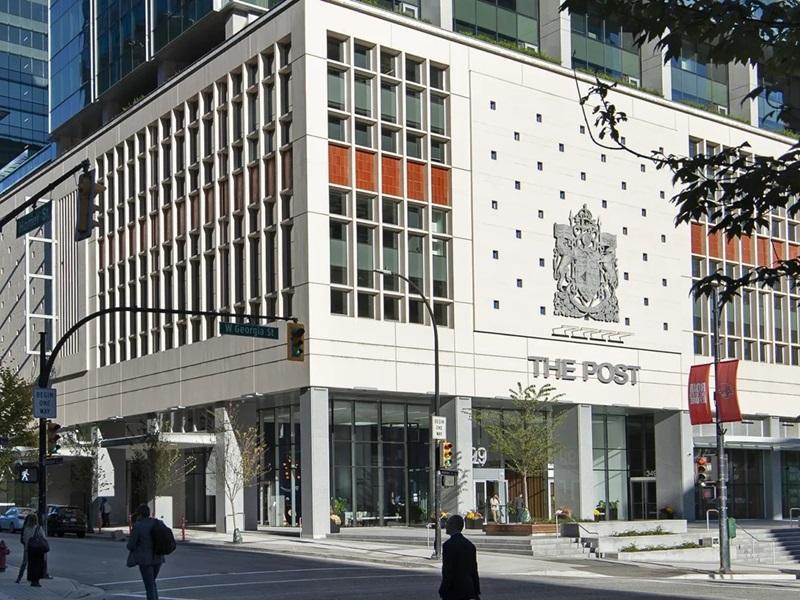 After initially trying to ride out an “uncertain” office market, Dream Office REIT (D-UN-T) has followed several of its peers by announcing a 50 per cent distribution cut, to take effect when it enacts a one-for-two share consolidation later this month.
After initially trying to ride out an “uncertain” office market, Dream Office REIT (D-UN-T) has followed several of its peers by announcing a 50 per cent distribution cut, to take effect when it enacts a one-for-two share consolidation later this month.
The announcement was made in the REIT’s Q4 and year-end 2023 financial report and discussed by chief executive office Michael Cooper on its call with analysts and investors Thursday evening.
“Over the last four years it has been very tough in the office sector,” Cooper stated, noting Dream is looking to both preserve cash and create additional liquidity in the coming months.
“Considering the environment that we are in, retaining cash is valuable and we decided to effectively reduce the distribution and retain another $19 million a year, just to give us more of a shock absorber in an uncertain environment.”
Dream had previously announced the one-for-two consolidation, which Cooper said is being undertaken to create a more attractive share price.
Dream Office REIT units were off over 12 per cent in morning trading on the TSX in the wake of the announcement, at $7.96. They had closed at $9.10 on Thursday.
Distribution cut maintains "decent" return
Cooper said the 50 per cent provides a bit of middle ground for liquidity while maintaining a return for unitholders: “The view of 50 per cent payout from where we were provides shareholders with a decent return and the company with decent liquidity.”
Dream waited much longer than some of its peers in the sector to make the move. Both Slate Office REIT and True North Commercial made deep cuts to their dividends last year.
And in its year-end 2023 financials released a week ago Allied Properties REIT, which is heavily invested in the office sector, announced almost $500 million in writedowns against its portfolio.
Cooper did note during Dream’s conference call, however, that continuing concern about the office market is not a surprise.
“Business continues to go as we expected for the business plan for 2023,” he said, noting that while some metrics in Dream’s portfolio are improving, the progress is very slow.
“There’s been a slight increase in occupancy every quarter (during 2023).”
Strong leasing, rent spreads rise
And there was good news on several fronts in the report.
COO Gord Wadley said the REIT had its most active leasing year with approximately 800,000 square feet of activity. This includes a “very large renewal and expansion” with DBS Morningstar at its Adelaide Place property during Q4.
The REIT has also fully leased one of its newly renovated Bay Street boutique properties, a 40,000-square-foot building at 366 Bay, to a global financial institution. The renovations are complete and the building is being fitted out, with occupancy set for later this year.
“None of us are immune to the headlines and nothing has been more polarizing than the impact of value and negative sentiment around non-core markets, specifically the class-B and -C office market,” Wadley noted in his own statements.
“However one thing is indisputable and that is that Toronto downtown is regarded as the best office market in Canada.”
He said “rents held up very well across the board,” with new leases sometimes topping $38 per per square foot, although higher operating costs are mitigating much of the benefits of those rates.
In-place rents which are being renewed generally range from the high teens to the low-$20s per square foot, he said.
Overall, Dream Office operates 26 properties and has two under development, encompassing approximately 5.1 million square feet and valued at approximately 2.34 billion.
Occupancy at the end of Q4 was 84.4 per cent, the same as at year-end 2022, with average rents across the portfolio of $26.35, up from $24.90 at the end of 2022 .
Dream declared a net loss of $42.4 million for the quarter, with $19.3 million of that total attributed to financial instruments - including charges for rate swaps as it restructured its debt. For the year, the net loss was $77.2 million.
Its debt to total asset value ratio was at 50 per cent.
Available liquidity was $187.2 million at the end of Q4.









